8 Reasons Why Bond Referendums Are Successful
Today, many school districts have reached a crossroads. With aging facilities and evolving educational needs, districts are seeking solutions to enhance their buildings to serve the next generation of students. Often, this requires construction projects funded by a voter-approved bond referendum.
Amid a charged political climate, a building bond referendum can seem daunting. However, having the right partner makes all the difference. ICS has over $2.6 billion in successful referendum experience over the past decade and has collaborated with 70 districts across Minnesota during that time. As the leading referendum-experienced firm in the state, ICS offers unmatched expertise in navigating the complexities of school district bond referendums.
The Challenges of the Referendum Landscape
At a time when many school districts face the realities of outdated facilities, the current referendum landscape has significant challenges.
- The current political climate has intensified scrutiny and elevated debate about taxpayer-funded projects, increasing the noise surrounding elections.
- Growing disparities between metro-area and rural districts highlight uneven access to resources. These disparities are mainly due to differences in net tax capacity, which causes the tax impact of referendum projects to fall more heavily on residents in rural areas.
- Social media and other online forums can amplify dissenting voices and misinformation, which means more patience is required to build consensus and effectively communicate the benefits of referendum plans.
With these challenges, how does a school district set itself up for a successful bond referendum?
Proven Principles of Referendum Success
A successful bond referendum includes strategic planning, early and ongoing community engagement, and strong district communications. In addition, a successful bond referendum includes active, community-led advocacy. Let’s take a closer look at eight reasons why bond referendums succeed.
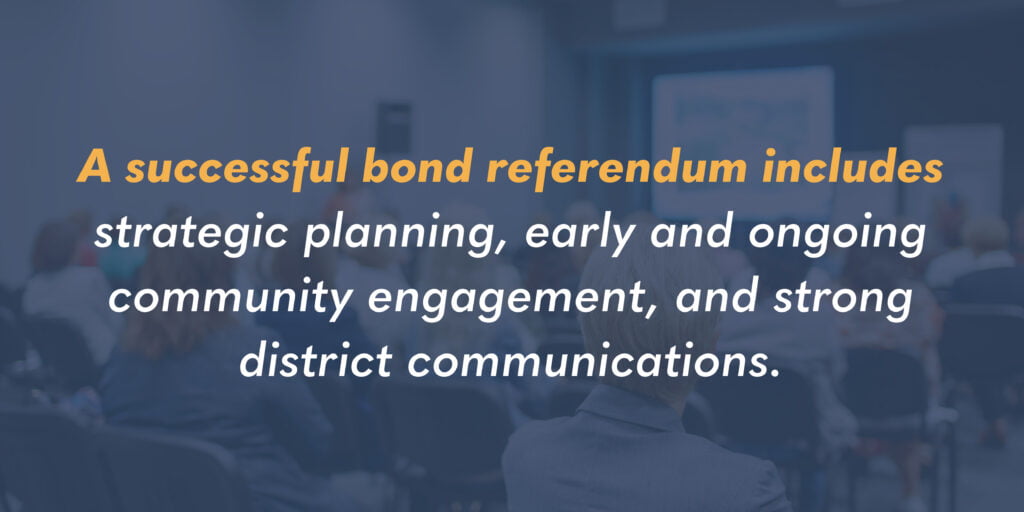
1. Residents Trust the District’s Decision-Making
Residents trust the decisions of district leaders because of consistent performance and ongoing engagement. When residents believe the administration and school board provide quality education, make choices in the best interest of children, and manage taxpayer dollars wisely, they are more likely to trust the decisions of district leaders.
2. The District Seeks a Wide Range of Community Input
Referendum plans are most successful when created collaboratively, with input from the entire community rather than just the administration or the school board. This involves addressing the diverse needs and concerns of various stakeholders, such as teachers and staff, alums, parents with school-aged children, local employers, agricultural landowners, senior citizens, civic organizations, and other influential community members. When the community helps develop the plan, they are more likely to support it.
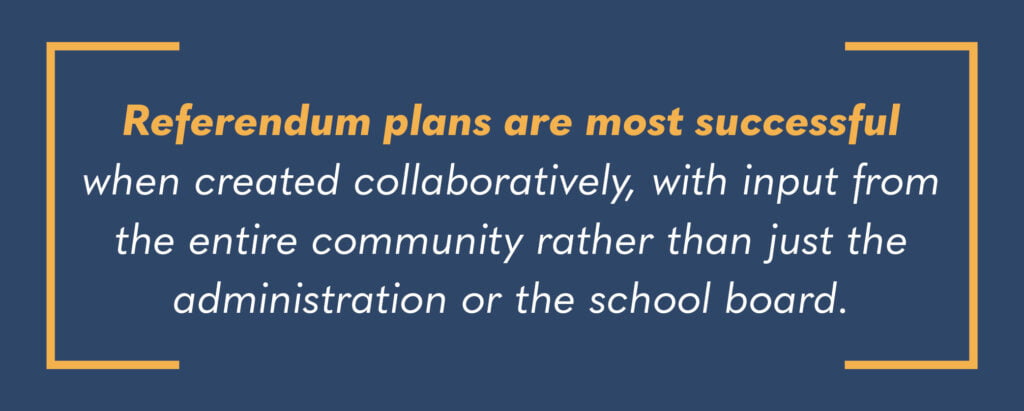
3. Residents Understand the Value of the Referendum Plan and Tax Impact
Determining the appropriate project cost and associated tax impact of a bond referendum are key elements of a successful plan. Referendums that have a lower tax impact on residents are more likely to be approved by voters. However, residents may also support a plan with a larger tax impact, if they believe the cost of the plan supports their priorities and provides excellent value.
Occasionally, economic conditions change between the moment a plan is adopted and when an election is held. Thus, districts must address the real question residents have: Is the district asking for a wise investment? When residents understand how a plan benefits students and contributes to their community’s viability and quality of life, they are more likely to support it.
4. The District Answers Questions About the Referendum Quickly and Accurately
Prompt responses to questions about referendum plans build trust and reduce misinformation. Clear and responsive communication instills confidence in the district’s transparency and decision-making.
5. District Leaders are Visible and Transparent About Their Reasons for the Referendum Plan
District administrators, school board members, parents, teachers, and staff are the most critical communicators during a referendum. When they express confidence in the plan and take an active role in explaining its value, the community will notice.
Given community members’ busy schedules, district leaders must go where the public is most comfortable rather than wait for the public to come to them. One-on-one meetings, presentations, small group discussions, and forums at churches, associations, chambers of commerce, and other local venues are all great ways to engage community members. Additionally, leaders can use social media platforms like Facebook, Twitter/X, and Instagram to share messages and respond to inquiries.
6. The District Provides High-Quality Communications Materials
Concise, visual, and easily accessible print and digital communications materials are important components of a referendum. This includes a dedicated referendum website to serve as a central location of resources about the referendum. When done well, they are indispensable tools to elevate awareness, answer questions, and build support for a referendum plan. Other examples include social media posts, fast facts fliers, and district-wide mailings.
ICS partners with Rapp Strategies, Inc. to help school districts develop and implement high-quality public information and community engagement initiatives during the referendum process. Rapp Strategies is a full-service public affairs firm with a proven track record in school district referendum elections, having assisted over 120 school districts in the Upper Midwest.

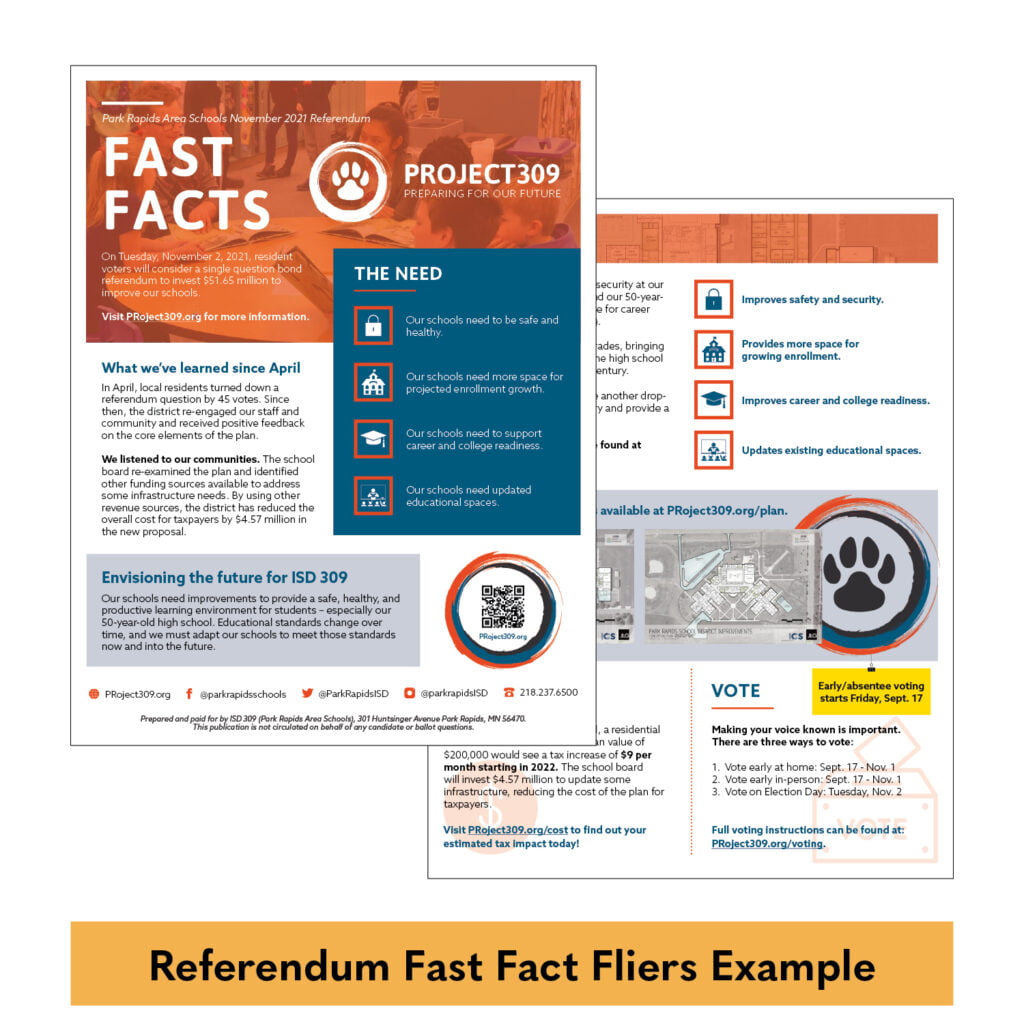
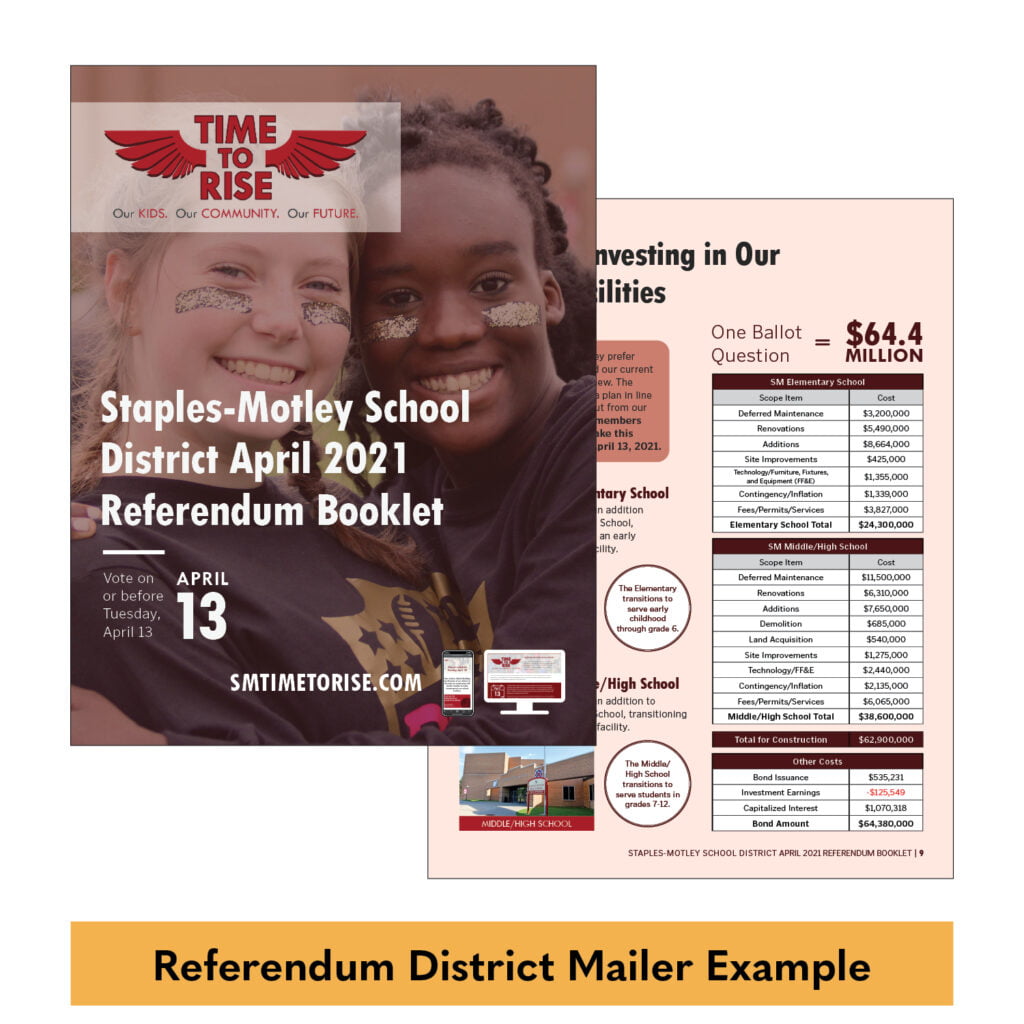
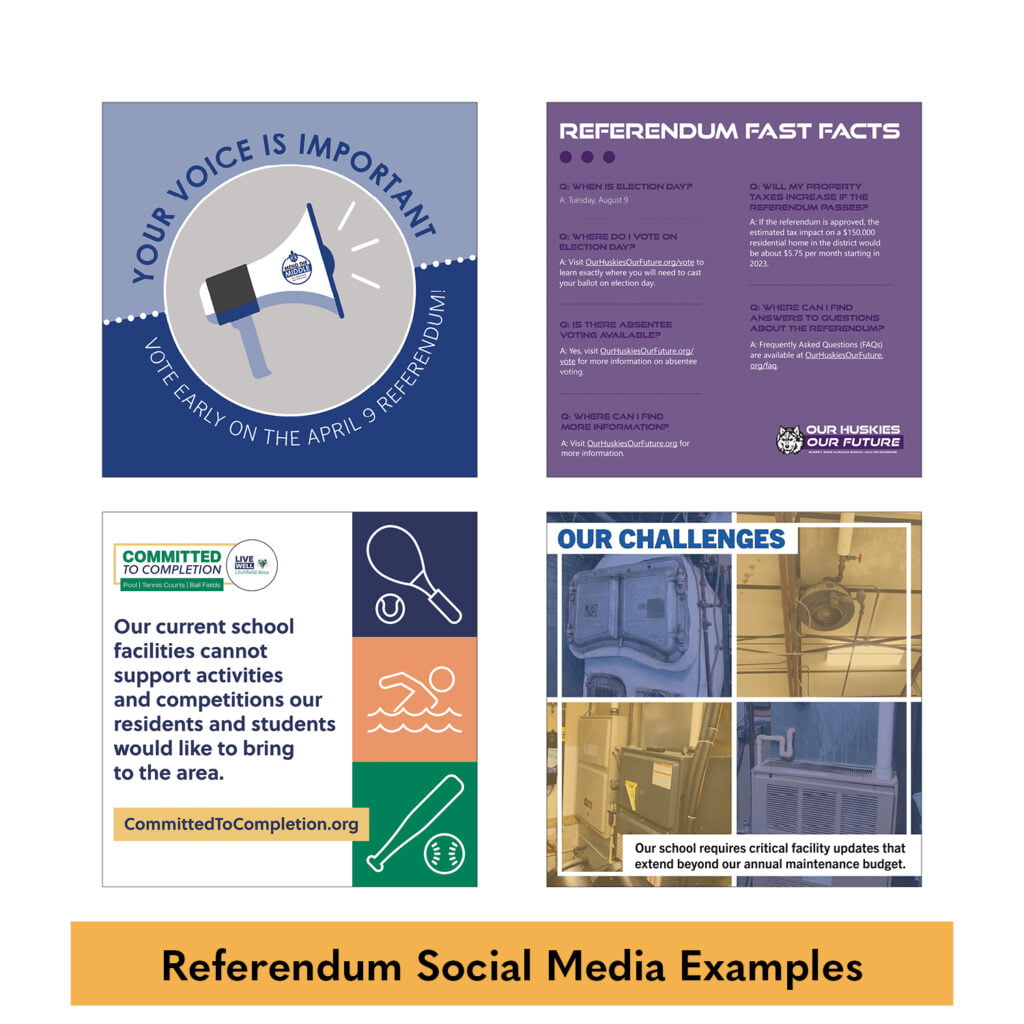
7. Communications Efforts Focus on the Benefits of the Plan
When communicating, districts should highlight how the plan will positively impact students and education, the community, businesses, and economic growth in the area. Certainly, school districts also have a responsibility to communicate the plan’s tax impact to residents. However, taxes are not the plan—they support the plan’s educational goals.
8. District Leaders Recognize that Residents Have Diverse Opinions About the Plan
There will be opponents and criticism in every referendum. Ultimately, critiques are not about whether people want good schools in their communities. Rather, people have different views of the plan’s value—and not everyone will embrace it.
The key for district leaders is staying focused. Leaders who try to win arguments ultimately lose opportunities to lead the narrative within their community. Instead, leaders should elevate the plan’s benefits and the impact on education while correcting misinformation when appropriate.
Finally, the Community Forms an Active “Vote Yes” Committee.
You’ll notice that this is separate from school districts’ responsibility. District staff cannot use public resources to advocate for a “yes” vote. However, an active group of community leaders, teachers, and parents who are willing to advocate for the referendum is crucial to motivating residents to vote and justifying the plan’s value for the community.
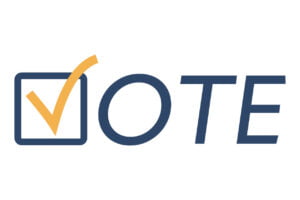
In Summary…
School districts that engage their communities, listen to feedback, communicate well, and build support for the plan have a higher chance of a successful bond referendum. While these principles provide a helpful overview, they are only the beginning. With each of our clients, we provide counsel, strategies, and tactics to support your school district best. If you’re interested in learning more, please contact ICS here. To learn more about our partner Rapp Strategies, click here.

